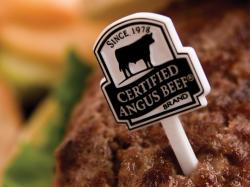Did You Know.. Highest. Quality. Beef. Ever?
April 4, 2016 | 4 min to read

All agree the real driver of beef demand is its unique flavor, and marbling drives flavor. This key component of quality grade has grown in the last few years, to where the U.S. beef industry is probably producing the best eating experience in its history. That bodes well for beef demand.
Sure, some old timers argue that the early days of cattle feeding (mid-1950s to late ’60s) produced equally “rich” beef, but even they admit the 1970s saw a rapid erosion in quality – and beef demand.
Anyway, that’s in the past and today’s trends are top of mind. Under our current grading system in 2015, the industry fed-beef average of 74.2% Choice and Prime carcasses was the highest ever achieved, and not by just a little bit.
As we compare changes in the percentage of Choice and Prime beef in the mix, rather than cite a percentage of a percentage, we’ll use “percentage points;” last year’s number was 4.6 points higher than 2014.
The first eight years of this century saw only a continued flat trend from decades past, 55% Choice and Prime. But the next seven years have seen nearly a 20-point increase.
So why did that happen? A big part of the answer is easy feedyard math. Cost of gain (COG) in the area of 80 to 90 cents per pound, fed cattle prices in the $1.20 to $1.50 range and feeder replacements in a much higher range encouraged feeding to heavier weights. That was further driven by very poor feeding margins for the past couple of years.
But that’s only part of the answer because 2008-2011 saw some of the highest corn prices in history with COG above fed cattle prices per pound – yet we still observed a 6- to 7-point increase in the share of Choice and Prime in the fed cattle mix. Obviously, the other key grade driver was at work: improved genetics for marbling.
Led by Angus, nearly all breeds with good database sharing tools starting seeing an upward shift in their genetic trend lines for marbling.
Price relationships and better cattle genetics are two main drivers, but here are a few more factors: A severe drought triggered the culling of nearly 5 million beef cows of lower quality. That meant a higher percentage of long-fed, top-grading Holsteins in the fed-cattle supply, more that making up for the later decline in the share of beef heifers in the mix as the best were kept for replacements, and heifers tend to out-grade steers.
If you follow beef news, you know about our dramatic improvement in quality grades, but here’s what you likely DID NOT KNOW:
Historically when you looked at beef packing quality grade by region, Nebraska plants would be 6 to 10 percentage points higher than Kansas, and Kansas 4 to 8 points higher than Texas plants.
But in 2015 – in a single year – Kansas plants improved the grading share for Choice and Prime by 8.3 points, up from 67.4% in 2014 to 75.7%, nearly equal to the Nebraska plant average of 76.7%. The regional shift is only growing stronger: for the first 10 weeks of 2016, Kansas plant averages reached an amazing 80.2% Choice and Prime while Texas and Nebraska held steady (See Table).
Looking at the window from 2005 to 2015, Nebraska plants increased 11.9 points, Texas plants 20.6 and Kansas plants 29.7 points. Again, those are numerical increases in percentage. Expressed as a percent of a percent, the improvement in the share of Choice and Prime carcasses in the Kansas fed beef mix has been 64% in 10 years.
So what is driving the bigger increase in Texas and Kansas particularly in recent years? Of course, there is no single answer, but here are some likely contributing factors.
Shawn Walter of Professional Cattle Consultants has pointed out significantly increased days on feed for the Southern Plains while those remain fairly static in Nebraska. Kansas State University (K-State) Focus on the Feedlot data confirm increased feeding days and finished weights in the state last year versus 2014.
Procurement staff from several leading packers say more Northern fed cattle have been making their way to Southern plants. Agents for the Northern plants traditionally buy more cattle at auction markets, but lately more of those bids have been won by Kansas packer buyers. Those cattle typically grade better than most sold by grid and formula.
Certified Angus Beef ® (CAB®) data comparing Kansas and Nebraska plants shows a shift to more qualifying for the brand in Kansas, where, not incidentally, carcass weights were also heavier last year than in 2014.
Of course, this sustained trend toward higher marbling supports the unprecedented run of 11 consecutive annual sales increases for CAB. A global brand with nearly a billion pounds on the market in 53 countries must have ready supply to take advantage of the growing supply fostered by superior marbling.
Thanks to genetics and market dynamics, the CAB acceptance rate has doubled, from 14% in 2006 to 28% last year. Considering the heavier weights on the market last year, that increase netted nearly half a billion more pounds for the brand.
Bottom line: Beef packers less than 10 years ago set the bar “high” at 70% Choice and Prime, seemingly unattainable then. Having blown past that raises the bar to keep up the supply for a modern beef product that allows retailers and restaurants to market and serve extremely high quality, customer-pleasing beef that only increases demand for more.
Source: Certified Angus Beef LLC
